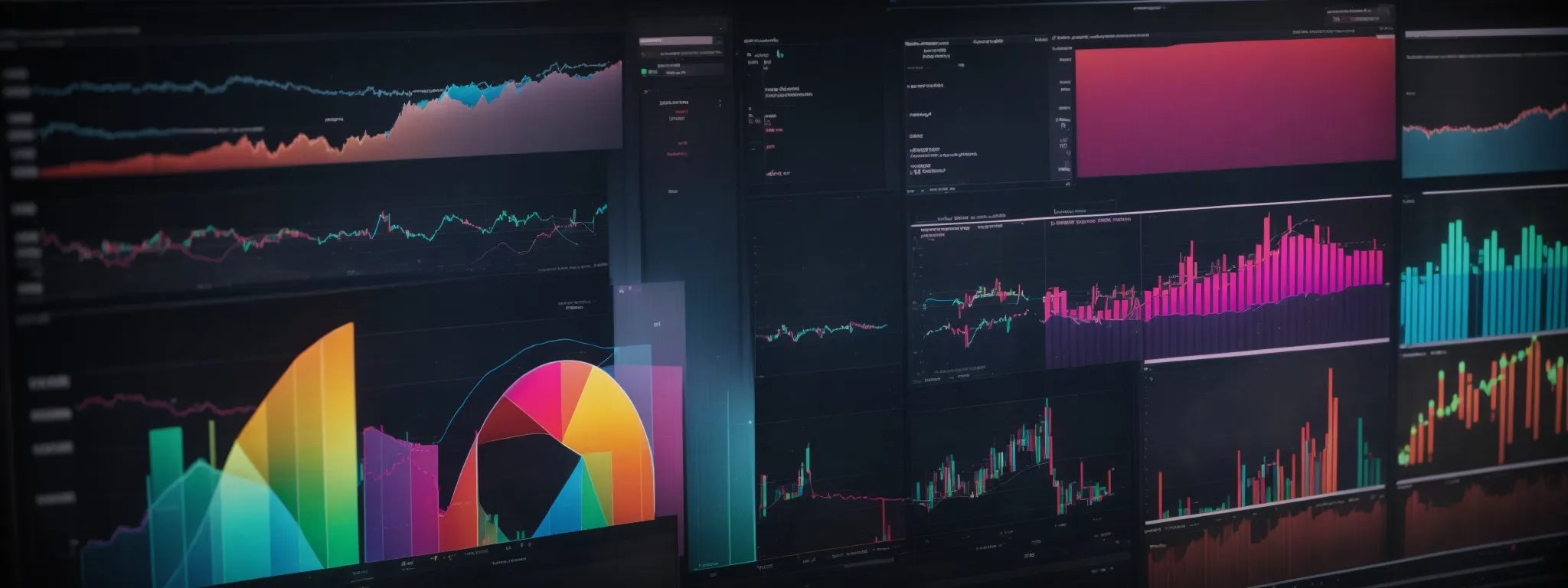Improve Content Quality Using Metrics That Matter: SEO
Boosting SEO: How to Enhance Content Quality With the Right Metrics In an ever-evolving SEO landscape, content quality has emerged as a pivotal factor for ranking success. […]
Boosting SEO: How to Enhance Content Quality With the Right Metrics
In an ever-evolving SEO landscape, content quality has emerged as a pivotal factor for ranking success.
Brands and creators keen on optimizing their online presence can no longer ignore the power of well-crafted content, synergized with strategic metrics that serve as a beacon for search engine algorithms.
Delving deep into the right metrics not only fine-tunes the SEO strategy but also aligns the content with the intricacies of user expectations and search engine requirements.
Through the application of precise metrics, companies can sculpt content that resonates with both the audience and the technological tendrils of search engines.
Keep reading to unveil a trove of insights on maximizing content quality and harnessing its potential to upgrade your SEO initiatives.
Key Takeaways
- Quality Content Is Essential for SEO, Influencing User Experience and Search Engine Rankings
- Analysis of Organic Traffic, Engagement Metrics, and Conversion Rates Is Key to Effective SEO Strategies
- Technical SEO, Including Page Speed and Index Status, Is Critical for Content Visibility and Search Performance
- Social Media Metrics Provide Insights Into Content Virality and Impact on Search Engine Optimization
- Competitive Analysis and Benchmarking Against Industry Peers Inform and Improve Content Strategy and SEO Efforts
Understanding Why Quality Metrics Boost SEO

In the dynamic world of Search Engine Optimization, the significance of quality content cannot be overstated.
As search engines continually refine their algorithms, they prioritize content that not only radiates relevance and expertise but also aligns with user intent.
This underscores the essence of employing precise content metrics as a backbone for SEO success.
It is here that the intricate relationship between user experience and search result positioning becomes evident; tailored content that resonates with an audience optimizes engagement metrics, leading to improved search engine rankings.
Therefore, understanding and leveraging the right quality metrics is crucial for enhancing a marketing strategy and ultimately elevating a brand’s digital footprint.
The Role of Quality Content in Search Rankings
In a landscape where search engines are the gateways to digital visibility, the role of quality content becomes critical in achieving prominence in search rankings. Content that offers depth, accuracy, and value to the searcher not only garners attention but also earns the trust of search engines, as these engines seek to pair users with the most relevant and authoritative information.
Fostering a strong alignment between content quality and user search intent is a nuanced art, one that LinkGraph’s SEO services and their SearchAtlas SEO software excel at. By leveraging sophisticated SEO tools and strategies, they ensure that content is not just created but crafted to meet the expectations of both the search engines and the target audience, paving the way for improved search engine optimization.
How Relevant Metrics Impact SEO Success
In the realm of search engine optimization, metrics serve as navigational beacons, guiding marketers towards content that not only resonates with their target audience but also complies with search engine guidelines. Metrics such as bounce rate, session duration, and page views provide insight into user engagement, a strong indicator of how search engines will assess content relevance and quality:
- User engagement metrics indicate the content’s alignment with audience interest, multilayered by an intuitive user experience.
- Analysis of organic search traffic helps companies understand the effectiveness of their SEO strategy, leading to refined content marketing approaches.
- Armed with conversion metrics, businesses can correlate content elements with goal completions, furthering an understanding of user behavior.
Moreover, the strategic utilization of these metrics enables SEO services like LinkGraph’s to optimize a website’s content, structure, and on-page elements. This optimization ensures not only greater visibility in search engine results pages but also translates into tangible gains in audience engagement and brand loyalty.
The Connection Between User Experience and SEO
The interplay between user experience and SEO is more than a mere coincidence; it is a reflection of a site’s ability to cater to its visitor’s needs swiftly and effectively. Search engine algorithms have evolved to interpret positive user signals, such as low exit rates and longer dwell times, as hallmarks of quality content, thus awarding higher search rankings to such entities.
LinkGraph’s SEO services recognize the significance of this relationship and leverage SearchAtlas SEO software to meticulously hone every web page for optimal performance. A well-structured SEO strategy pivots on ensuring that each visitor’s interaction is seamless and rewarding, directly influencing a site’s authority and position in the digital marketplace.
Selecting the Right Metrics for Content Quality

Charting a course through the digital seas of content marketing requires more than just crafting compelling copy; it necessitates a strategic approach to content metrics that align with an organization’s overarching objectives.
The ability to distinguish between metrics that merely decorate reports and those that offer substantive insights is critical for a content strategy that converts.
By striking a balance between the quantity of content and the quality reflected within key performance indicators, companies like LinkGraph, with their SEO services and SearchAtlas SEO software, illuminate the pathway to content mastery.
This introduction sets the stage for exploring how identifying relevant metrics, separating the impactful from the inconsequential, and maintaining equilibrium between content volume and refinement drives success in SEO endeavors.
Identifying Which Metrics Align With Your Goals
In the context of content quality and its impact on SEO, identifying which metrics align with a company’s goals is paramount. LinkGraph’s SEO services underscore the importance of matching performance indicators with business objectives: aligning content marketing performance with desired outcomes ensures resources are focused on strategies that move the needle.
- Content engagement metrics, like comments and shares, can signify successful audience connection, vital for brand awareness and advocacy.
- Conversion rate and goal completions reflect content’s efficacy in guiding users to desired actions, a critical aspect of revenue-orientated campaigns.
- Organic search metrics, including click-through rates and search rankings, highlight a content’s reach to and reception by the target demographic.
Furthermore, for agencies seeking scalable SEO solutions, understanding that every metric tells a part of the story is crucial to crafting an informed strategy. LinkGraph leverages SearchAtlas SEO software to dissect granular data, from bounce rates to pageviews, ensuring that their white-label SEO services drive meaningful engagement and achieve client-specific business goals.
Differentiating Between Vanity Metrics and Valuable Metrics
When assessing the efficacy of content within an SEO framework, it’s imperative to distinguish between vanity metrics, which might inflate perceived performance, and valuable metrics that genuinely reflect the content’s impact and reach. Vanity metrics often encompass data such as the sheer number of followers or page likes, which, while flattering, do not necessarily correlate with a company’s marketing objectives or content quality.
LinkGraph’s SEO services hinge on the power of valuable metrics, prioritizing measurable data that informs strategy and directly ties to business growth. This includes metrics like conversion rate, organic traffic, and engagement ratios that align with long-term SEO goals and provide actionable insights rather than momentary gratification.
Balancing Quantity With Quality in Content Metrics
In the intricate tapestry of SEO, mastering the delicate equilibrium between the quantity of content produced and the quality it embodies marks the difference between mere online presence and market dominance. LinkGraph’s meticulous approach to SEO services involves not only an ample supply of content but also rigorous adherence to content optimization standards, ensuring that each piece serves the twin mandates of search engine compliance and reader satisfaction.
Quality content metrics transcend the superficial tally of words on a page, evolving into robust indicators of search relevance and user value. LinkGraph’s SEO efforts, grounded in the sophisticated analytics of SearchAtlas SEO software, provide a clear lens through which content is not just measured but calibrated, enabling a harmonious blend of content depth and performance to drive SEO success.
Elevating Content Quality Through Engagement Metrics

In the quest to perfect search engine optimization, businesses can make significant advancements by refining their understanding of engagement metrics.
These metrics present a comprehensive narrative of how well content serves its intended audience, reflecting user interaction through tangible data points.
As search engines gravitate towards rewarding those who optimize for end-user satisfaction, professionals are tasked with key objectives: track and interpret bounce rates for incremental content improvement, measure time on page as a testament to content relevance, and analyze pages per session to gauge the depth and engagement potential of the content.
Grasping these metrics furnishes marketers with the insight to tailor their content marketing strategies, driving up both SEO rankings and the value delivered to their readers.
Tracking and Interpreting Bounce Rates for Content Improvement
Bounce rates serve as a critical lens through which the initial appeal and relevance of content can be scrutinized. A high bounce rate may signal that a page does not effectively meet the searcher’s needs or expectations, indicating a need for content enhancements.
Interpreting bounce rates involves more than just numbers; it requires a comprehensive analysis of content quality, user intent, and the overall user experience. Prudent modifications to content, informed by these insights, can lead to a more engaging and informative user session:
- Assessment of the entry page functionality to ensure instant user clarity.
- Enhancement of the content’s immediate value proposition to engage the visitor.
- Optimization of the navigational structure to facilitate deeper exploration of the site.
Measuring Time on Page to Assess Content Relevance
Measuring time on page stands as a pivotal determinant of content relevance, offering insights into whether a web page successfully maintains the user’s interest. LinkGraph’s SEO services harness this metric, using their advanced SearchAtlas SEO software, to determine the resonance of the content with its audience, thereby driving strategy for content optimization.
Considered a direct reflection of reader engagement, the duration spent on a particular page signals the value the content is providing. LinkGraph’s SEO professionals analyze these time-related insights as a key performance indicator, using it to hone the user experience and ensure content not only draws visitors but captivates them, bolstering search result standings.
Analyzing Pages Per Session for Content Depth
An analysis of pages per session provides a window into the content’s ability to encourage exploration beyond the initial landing page. LinkGraph’s SEO services place significant emphasis on this metric, recognizing that a greater number of pages viewed during a single session is often indicative of content that captivates interest and facilitates a journey through the site’s deeper offerings.
Through the strategic application of SearchAtlas SEO software, LinkGraph meticulously evaluates the depths to which users delve into the site’s content, using insights from pages per session to refine the interlinking and informational hierarchy. This approach ensures that every visitor is presented with a rich tapelety of content, poised to satisfy their informational needs and to positively influence search engine rankings.
Leveraging Keyword Metrics for Content Optimization

Optimizing content for search engines is an ongoing process that involves a meticulous analysis of keyword metrics to ensure alignment with SEO goals.
By rigorously gauging keyword rankings, observing keyword trends, and strategically incorporating long-tail keywords, companies like LinkGraph enhance their content’s visibility and relevance in the digital space.
These metrics not only inform the refinement of existing content but also inspire the generation of new topics that resonate with a specific audience.
This data-driven approach results in a robust SEO content strategy, adept at targeting the right users and bolstering a brand’s online presence.
Utilizing Keyword Rankings to Guide Content Updates
LinkGraph’s SEO services prioritize keyword rankings as a cornerstone for informing content upgrades, ensuring that any enhancements are strategically aligned with search visibility goals. Through focused analysis, their SEO experts identify underperforming keywords and orchestrate content updates to elevate page relevance, thus enhancing visibility and user engagement.
By utilizing real-time data from SearchAtlas SEO software, LinkGraph’s team adeptly adjusts content to the ever-evolving landscape of search queries. This approach ensures that each piece of content is accurately targeting sought-after terms, propelling it to sit prominently within search engine results and effectively reach the intended audience.
The Importance of Keyword Trends in Content Creation
Grasping the pulse of keyword trends stands at the forefront of content creation, as it allows LinkGraph’s SEO services to align content with the evolving interests and queries of the target audience. Such attentiveness to trends not only imbues content with a sense of contemporaneity but also heightens relevance in the eyes of both the user and search engines.
LinkGraph’s approach to content creation involves the strategic weaving of trending keywords, identified through SearchAtlas SEO software, into their client’s digital narratives. This tactic ensures that content not only garners search engine attention but also resonates with the contemporary searcher, fostering both immediate engagement and sustained organic growth.
Integrating Long-Tail Keywords for Niche Targeting
LinkGraph’s SEO services capitalize on the potency of long-tail keyword integration, refining the focus towards niche markets. This tailored approach addresses specific queries, establishes a clear topic relevance, and enhances the likelihood of converting search traffic into engaged customers.
Incorporating long-tail keywords within content nurtures a robust connection with a highly-targeted visitor segment, a method that LinkGraph’s seasoned experts craft through the precision of the SearchAtlas SEO software. Aiming for exactitude, such strategy draws users with definitive intent, streamlining the path to higher search ranking success.
Using Traffic and Conversion Metrics to Sharpen Content

Enhancing a website’s SEO is akin to navigating the complex currents of the digital ocean, where understanding the flow of traffic and its conversion tides is key to steering content strategy towards greater effectiveness.
In this digital voyage, breaking down organic traffic data unveils the nuances of audience behavior, conversion rates serve as clear indicators of content’s ability to fulfill user needs, and analyzing traffic sources offers a map to understand the breadth of audience reach.
LinkGraph’s SEO services adeptly wield these metrics, employing precise data analysis to sharpen content and ensure it resonates with the intended audience while driving meaningful engagement and conversions.
Breaking Down Organic Traffic Data for Content Strategy
Dissecting organic traffic data represents a foundational aspect of content strategy, providing a lens for LinkGraph’s SEO services to identify the most effective pathways for audience growth. The thoughtful interpretation of such data, facilitated through advanced analytic tools like SearchAtlas SEO software, enables the development of targeted content that reaches the heart of search queries and user interest.
Equipped with insights from organic traffic analysis, LinkGraph crafts an SEO content strategy that serves key audience segments and enhances search result relevance. This strategic approach not only elevates the user experience but also dovetails seamlessly with the nuanced demands of search engine algorithms, ensuring that content not only attracts visitors but also sustains their engagement.
How Conversion Rates Reflect Content Effectiveness
Conversion rates serve as a trustworthy compass, guiding LinkGraph’s SEO services in assessing the effectiveness of content. This metric reflects the proficient alignment between a webpage’s purpose and the visitor’s actions, pinpointing the content’s capacity to motivate desired outcomes.
Through LinkGraph’s strategic analysis provided by SearchAtlas SEO software, conversion rates deliver direct insight into how content contributes to the user journey. A higher conversion rate is testament to content that successfully captures and directs the user’s intentions, thereby underlining its role in the broader context of SEO efficacy.
Using Traffic Source Analysis to Understand Audience Reach
Analyzing traffic sources plays a crucial role in mapping the expanse of a brand’s audience reach. By understanding where website visitors originate from, whether it be organic search, social media, or referral links, LinkGraph’s SEO strategies can be fine-tuned to target areas with the greatest potential for audience growth and engagement.
The insights gleaned from traffic source data arm LinkGraph’s SEO services with the ability to segment user interest and behavior, pinpointing which channels merit further investment:
- Organic traffic insights point to the health of SEO efforts and keyword efficacy.
- Referral traffic analysis uncovers potential partnerships or guest posting opportunities.
- Social media traffic sheds light on content shareability and audience interaction.
Such granular analytics facilitate informed decisions, allowing LinkGraph to craft an SEO strategy that not only broadens brand awareness but also resonates powerfully with a diverse audience spectrum.
Improving Content Through Technical SEO Metrics

In the realm of bolstering search engine optimization, a meticulous focus on technical SEO metrics is indispensable for fortifying content quality.
Page speed and core web vitals emerge as pivotal components, influencing user experience and SEO performance alike.
Meanwhile, diligent monitoring of index status and diagnosing crawl errors are equally critical, serving as gatekeepers to ensuring content visibility and addressing issues that could impede a website’s ability to be effectively parsed by search engines.
As such measures are paramount for a website to thrive in a competitive digital environment, LinkGraph’s SEO services emphasize the meticulous optimization of these facets, ensuring content is primed for superior performance and maximum reach.
Importance of Page Speed and Core Web Vitals in SEO
In today’s digital climate, the imperative of page speed and core web vitals as technical SEO metrics is undeniable. These metrics are pivotal to providing an optimal user experience and consequently influence a domain’s performance in search engine rankings.
LinkGraph’s SEO services are acutely aware that page load times and stability, represented by core web vitals, are among Google’s ranking factors: a prompt and smooth online experience retains users and satisfies search engine demands for speed and functionality.
| Technical SEO Metric | Impact on User Experience | Relevance to SEO |
|---|---|---|
| Page Speed | Facilitates quick access to content, reducing bounce rates. | Directly correlates with SERP positioning and user satisfaction. |
| Core Web Vitals | Measures visual stability and interactivity, assuring a fluid user journey. | Encompasses critical ranking signals for search engine algorithms. |
Monitoring Index Status for Visibility Improvement
Within the sphere of technical SEO, vigilance in monitoring index status is vital for ensuring content is discoverable and visible on search engines. LinkGraph’s SEO services focus on fine-tuning indexability, taking preemptive measures to rectify any deterrents that could lead to the omission of valuable content from search engine result pages.
LinkGraph employs advanced tools like SearchAtlas SEO software to regularly audit indexed pages, ensuring that newly published content is swiftly recognized and appropriately classified by search engines. This strategic oversight is fundamental, as an accurate index status forms the bedrock for higher search engine rankings and enhanced organic reach for a brand’s digital presence.
Diagnosing Crawl Errors to Prevent Content Issues
Ensuring content is accessible and accurately indexed by search engines necessitates regular evaluations for crawl errors. LinkGraph’s SEO services employ meticulous diagnostic procedures, utilizing SearchAtlas SEO software, to identify and address any crawl anomalies that may obstruct a search engine’s ability to traverse and index a site’s content efficiently.
Addressing crawl errors proactively plays an integral role in maintaining a website’s health and its content’s visibility. LinkGraph’s team of experts adeptly resolves these issues, solidifying the foundation upon which search engines assess and rank a website’s offerings, thereby safeguarding against potential losses in organic search performance.

In the digital marketing ecosystem, the power of social media as an amplification tool for content cannot be understated.
If content is the lifeblood of SEO, then social shares and content performance are its pulse, signaling the content’s resonance with a wider audience.
As businesses unravel the fabric of SEO, a particular focus on social metrics provides invaluable insight into content virality and its subsequent impact on search engine optimization.
LinkGraph’s SEO services adeptly navigate these waters, steering content efforts towards not only heightened visibility but also enhanced search engine authority by tapping into the undercurrents of social engagement and its correlating SEO benefits.
Assessing Content Virality Through Social Metrics
In gauging the pulse of content marketing, the examination of social metrics becomes a crucial aspect of assessing content virality. LinkGraph’s SEO services underscore the significance of social interactions, such as likes, shares, and comments, as they reflect a piece of content’s ability to resonate with and captivate a broader audience on platforms beyond search engine result pages.
Such social engagements, quantified and analyzed through the meticulous use of SearchAtlas SEO software, offer LinkGraph’s team a comprehensive view of a content piece’s reach, influence, and potential to go viral. This understanding not only informs future content strategies but also elevates the profile of a brand, amplifying its voice across the digital landscape.
Understanding the Impact of Social Engagement on SEO
The interconnection between social engagement and SEO is rooted in the shared value of visibility and authority. When content is actively shared and discussed on social media, it captures the attention of not just potential customers but also search engines that consider such social signals indicative of content relevance and quality.
LinkGraph’s SEO services are adept at harnessing social metrics to inform and bolster a brand’s search engine optimization efforts. Recognizing that heightened social media activity can lead to increased search visibility, their strategies are designed to translate social engagement into improved search rankings.
Analyzing Competitor Content Metrics for Benchmarking

In the quest to ascend the SEO hierarchy, identifying and understanding the competitive landscape is imperative for brands aiming to refine their content strategy.
Scrutinizing competitor content metrics lays the groundwork for benchmarking, enabling businesses to set realistic yet ambitious SEO goals.
By meticulously analyzing the upper echelons of top-performing content within their industry, companies can glean insights into successful content attributes and adaptive strategies.
This systematic approach to competitor analysis is pivotal for LinkGraph’s SEO services, ensuring that their clients not only keep pace but also strategically outmaneuver counterparts in the race for optimal search engine positioning.
Identifying Competitor Benchmarks to Set SEO Goals
Businesses seeking to refine their search engine optimization must cast a discerning eye on the competition, establishing benchmarks rooted in prolific insights. LinkGraph’s SEO services adeptly identify key performance metrics from competitors, shaping measurable goals that drive client campaigns towards excellence in content creation and SEO leadership.
Collating data across various dimensions such as engagement rates, organic ranking patterns, and keyword successes, LinkGraph’s SEO team crafts bespoke goals that resonate with the company’s unique market positioning. This targeted approach sets a foundation on which to anchor content strategies, ensuring they are not just ambitious but also actionable and aligned with industry standards.
Learning From Top-Performing Content in Your Industry
In the landscape of search engine optimization, lessons gleaned from the industry’s top-performing content provide unparalleled value. LinkGraph’s SEO services dissect and distill the elements that contribute to the success of peer content, extracting key insights that inform and elevate a brand’s content marketing strategy, ensuring it resonates with market trends and audience preferences.
Such strategic emulation involves a careful review of thematic relevance, the incorporation of effective keywords, and the analysis of engagement metrics that signal content efficacy. This methodology positions LinkGraph’s clients to produce content that not only competes but sets a new benchmark for quality and search engine relevance within their industry.
Adapting Successful Strategies From Competitor Analysis
Adaption is key in the aggressive terrain of SEO; hence, LinkGraph’s SEO services emphasize the strategic implementation of competitors’ successful tactics. By dissecting competitor approaches that yield high search rankings and improved engagement, these professionals turn analytical findings into actionable strategies, confidently advising clients on content optimization and marketing maneuvers.
Applying competitive insights allows for the refinement of a brand’s existing SEO and content efforts: where one company finds success, another may glean inspiration, fine-tuning their approach to align with proven methods. LinkGraph expertly guides clients through this adaptation process, ensuring that SEO strategies are not just reactive but proactive, derived from comprehensive competitive intelligence.
| Competitive Analysis Segment | Focus Area | Outcome |
|---|---|---|
| Engagement Metrics | Refinement of engagement strategies | Increased audience interaction and loyalty |
| Keyword Performance | Alignment with market trends | Enhanced organic search visibility |
| Content Structure | Adaptation of content format and layout | Improved user experience and navigability |
Measuring the ROI of High-Quality Content on SEO

In the quest for digital supremacy, quantifying the return on investment (ROI) for high-quality content stands as a critical facet of an effective SEO strategy.
Among the plethora of optimization techniques, discerning the cost-effectiveness of content initiatives, understanding the enduring impact of quality content on SEO, and striking the optimal balance between investment in content and other SEO tactics are pivotal for sustaining organic growth and enhancing search engine visibility.
These considerations guide businesses towards judiciously allocating resources, ensuring that each dollar spent on content fortifies their online presence and translates into meaningful, measurable gains.
Calculating the Cost-Effectiveness of Content Initiatives
Assessing the cost-effectiveness of content initiatives is integral for businesses eager to ensure that their investment in content creation yields profitable SEO outcomes. LinkGraph’s SEO services specialize in evaluating content-related expenditures against the uptick in organic search presence and lead generation, unraveling the financial prudence of content efforts.
LinkGraph’s ability to measure direct and indirect returns from content underscores their expertise in SEO. Their skilled analysis quantifies the impact of strategic content on key metrics such as domain authority, engagement, and conversion rates, furnishing clients with tangible evidence of content’s contribution to overall SEO profitability.
How High-Quality Content Contributes to Long-Term SEO Gains
High-quality content is the cornerstone of sustainable SEO success, establishing and nurturing a brand’s authority over time. By offering valuable insights and solutions, such distinguished content earns backlinks from reputable sources, gradually enhancing a website’s domain authority and climbing the ranks of search engine results—affirming the importance of investment in enduring content development.
The strategic creation of superior content also plays a pivotal role in user engagement, fostering trust and credibility among audiences. This investment in quality establishes a foundation for future SEO efforts, where content not only drives higher traffic but maintains it, securing a brand’s position as a thought leader and a consistently reliable resource in the digital sphere.
Balancing Investment in Content Creation Versus Other SEO Tactics
Striking the right balance in allocating resources between content creation and other vital SEO tactics requires a strategic approach. LinkGraph’s SEO services exemplify proficiency in apportioning investments, ensuring each element of SEO, from technical audits to link-building efforts, works in concert with content to maximize SEO impact effectively.
Content creation, while a keystone of SEO, forms one aspect of a multi-faceted approach. By judiciously managing funds, LinkGraph ensures that comprehensive SEO services, including on-page optimization and keyword research, receive attention commensurate with their role in bolstering a site’s search engine standing:
- Diversifying SEO investments creates a well-rounded strategy that addresses multiple ranking factors.
- Focusing spend on content and SEO tactics according to data-driven insights optimizes outcomes.
- Continuous evaluation of resource allocation enables dynamic rebalancing in response to analytics.
Conclusion
Boosting SEO through the strategic use of quality metrics is essential for online success.
High-quality content that aligns with user intent and search engine algorithms garners better rankings and user trust.
Metrics such as engagement, organic traffic, and conversion rates are crucial guides for creating resonant content and optimizing site structure.
Tools like SearchAtlas SEO software enable services like LinkGraph to fine-tune websites for enhanced user experience, leading to improved search authority and brand loyalty.
Additionally, keeping track of technical SEO metrics ensures content visibility, while social shares and performance metrics offer insights into content virality.
Analyzing competitors helps set SEO goals and adapt successful strategies.
Ultimately, measuring the ROI of content initiatives clarifies their cost-effectiveness and long-term SEO benefits, guiding strategic investment in content creation and other SEO tactics for sustained organic growth and visibility.














































































